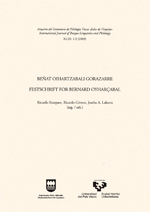Derived nominals from the nominal perspective
##plugins.themes.bootstrap3.article.main##
##plugins.themes.bootstrap3.article.sidebar##
Resumen
Derived Nominals are considered to be the last stage in the nominalization scale. This scale includes a continuum of structures with both nominal and verbal characteristics, and derived nominals are the most nouny in it. Unlike other intermediate structures derived nominals may be ambiguous between an event reading (event nominals) and a result reading (result nominals). Pluralization is one of the criteria proposed by Grimshaw (1990) to distinguish between the two: unlike result nominals, event nominals never admit pluralization. However, several recent works have argued that telic/bounded event nominals generally pluralize, unless some structural condition blocks it (Iordăchioaia & Soare 2008, Alexiadou et al. 2008).
This paper gathers evidence showing that (a)telicity/(un)boundedness alone does not explain the asymmetric behavior of event nominalizations with respect to the possibility to pluralize. In fact, certain telic event nominals are inherently equivalent to mass terms in the nominal domain and never admit pluralization or quantization. Syntactically, it is these derived nominals that lack the ClassP projection in their internal structure.
The paper has the following parts. Section 1 places derived nominals within the nominalization scale. Section 2 gathers evidence from the literature showing that, contra Grimshaw (1990), event nominals can generally pluralize across languages. Section 3 introduces the exceptional cases for the current standard view: certain telic event nominals do not pluralize. In section 4 I follow Kamiya (2001) in relating the impossibility of those exceptional cases to pluralize to the inherent mass property of such nominals, and ultimately, to the lack of the nominal functional projection [+count] ClassP. Conclusions are reached in section 5.
Cómo citar
##plugins.themes.bootstrap3.article.details##
Esta obra está bajo una licencia Creative Commons Atribución-NoComercial-SinDerivadas 4.0 Internacional.


